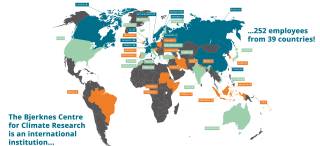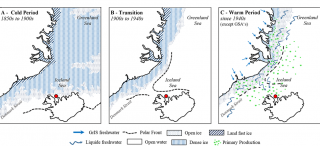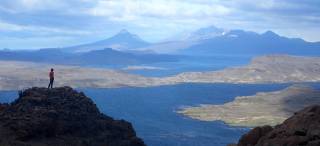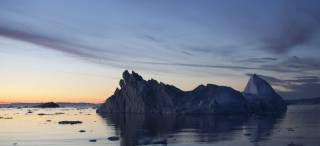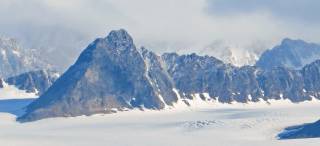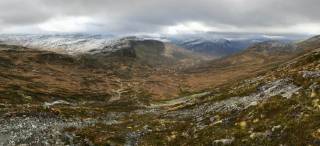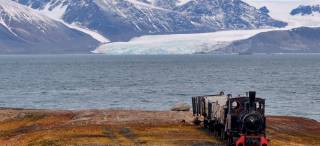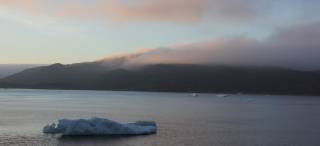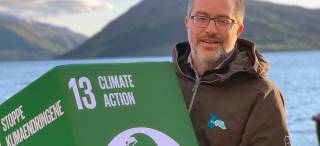Nyheter
446 results
Going to East Africa with climate prediction
30.03.2020, 08:36
A new EU project aim to improve climate prediction in 11 countries in East Africa. More accurate seasonal forecasts can help save crops, enhance food security and reduce flood risk.
Warming destabilizes the ocean circulation
26.03.2020, 22:57
Eirik Vinje Galaasen and colleagues presents a new study in Science that reveals gradual warming could trigger the ocean circulation to enter a more variable and chaotic state.
Citizen science postponed
24.03.2020, 11:36
Skiers help Harald Sodemann find out where the Norwegian snow comes from. His project planned for this Easter will, however, be postponed till next year.
Annual report 2019: 17 publications in Nature and Science journals
20.03.2020, 12:08
2019 resulted in 17 publications in Nature and Science journals
Antarctic ice walls protect the climate
27.02.2020, 09:55
Inland Antarctic ice contains volumes of water that can raise global sea levels by several metres. A new study published in the journal Nature shows that glacier ice walls are vital for the climate, as they prevent rising ocean temperatures and melting glacier ice.
Greenland ice melt started as early as 1940's
23.12.2019, 13:16
The freshening of the western North Atlantic from ice melt started as early as in the 1940's, new study indicates.
To the Southern Hemisphere in search for westerly winds
11.12.2019, 15:27
Leaving Christmas preparations and northern winter storms behind, geologists from Bergen have travelled to the far south. On the Kerguelen Islands in the Southern Ocean, they will search for the westerlies of ancient times.
Antarctica behind rapid sea level change in the last interglacial
07.11.2019, 09:25
In the last interglacial, the sea level rose to ten meters higher than today. For the first time, researchers have now traced the extra water to Antarctica.
Moss in sediments suggests ice-free spot in ice age desert
23.10.2019, 20:16
In the coldest years of the last ice age, the ice cap reached the British Isles and Poland. New research has revealed a green patch much closer to the North Pole. Part of a peninsula in Svalbard was free from ice.
Climate adaptation co-production course – because climate problems can't be solved alone
17.10.2019, 14:45
Erik Kolstad and Scott Bremer organise training in transdisciplinary climate adaptation research for early career researchers.
Elin Darelius held The Nansen Memorial Lecture
18.10.2019, 17:12
The yearly lecture at the Norwegian Academy of Letters and Sciences.
Spontaneous cooling triggered Arctic glacier growth
15.10.2019, 15:39
The natural climate system has mechanisms that can abruptly trigger change. New research suggests that spontaneous cooling may have caused Arctic glaciers to grow long before the Little Ice Age, without external forcing.
Rapid warming in the Arctic when the sea ice withdraws
25.10.2019, 15:01
This summer has produced extreme melts on the Greenland ice and Arctic sea ice. The researchers of the ice2ice project sees parallels to prehistoric, extremely rapid changes in climate.
Our safe operating spaces for our common future ocean in the Earth system
09.10.2019, 09:24
What are our safe operating spaces for the ocean?
This is the starting question for the new EU Horizon 2020 project COMFORT.
"A vital part of our commitment to Agenda 2030!"
28.08.2019, 10:30
The SDG213 course sets out to teach a new generation to tackle the challenges of climate change.
Eystein Jansen is a new board member of the European Research Council
28.06.2019, 15:48
ERC is the Champions League of research. The council commandeers 13 billion Euro for scientific projects in the EU area.
A Lego Ninja has landed on Greenland
21.06.2019, 10:30
What do you do when you going into the field for four weeks, with two children at home. You bring some Lego, of course!
Memorandum of Understanding signed between Bjerknes Centre and the Korea Polar Research Institute
13.06.2019, 13:21
Encouraging collaborative research between the two institutions.
Adapting yr.no for Mali
06.06.2019, 13:06
During their agricultural season, the farmers of Mali highly rely on timely rainfall. A new collaboration project adapts the weather service yr.no for the rainy season in Mali.





